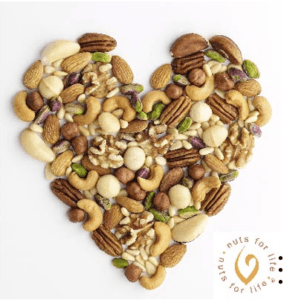
Although this is true for some nuts, they are also high in protein and minerals and at Lose Baby Weight we believe they are an important part of a healthy balanced diet. The key for people trying to lose weight is to know which nuts are most nutritious and which sorts of nuts should be avoided (our pick of ones that can help weight loss are pistachios, almonds and hazelnuts – just remember moderation!.
Good fats and bad fats
Fat is an essential part of a healthy diet, and in recent years advice has focused on the difference between saturated and unsaturated fats. Although both types of fats have the same calorie content, saturated fats can raise the level of cholesterol in the blood which in turn raises the risk of heart disease. Saturated fats are most commonly found in dairy products, meat and cakes. Unsaturated fats are the healthier choice as they do not contribute to raising cholesterol.
This sort of fat can actually help lower cholesterol and is found in oily fish, seeds, nuts and olive oil – it is also thought to help with the removal of stomach fat. Eating small amounts of unsaturated fats can also satisfy the cravings that many dieters have for fatty foods.
Types of nuts
It is important that nuts are eaten in their raw state, or simply dry roasted without the addition of any other ingredients. Salted nuts are very high in sodium and many of the caramelized nuts on the market are equally high in sugar. Plain nuts are by far the healthiest choice, but portion size should be carefully monitored.
Macadamia, Brazil and Pecan
These two nuts are the varieties that people trying to lose weight should avoid, as they are the highest in calories – although they are high in nutrients. A 100g serving of macadamia nuts contains 719 calories, and the same weight of pecans is 715 calories.
Peanuts
Peanuts are very high in protein ( 25 grams per 100gram serving) of good quality. They are a very good source of energy, with 50 grams of fats and 16 grams of carbohydrates per 100 gram serving – just don’t have too many of them!
Almonds and Hazelnuts
Almonds are a valuable source of protein and other minerals, and should therefore be included in moderation in the diet of people who are trying to lose weight or following a weight loss plan. Almonds are much richer in minerals such as potassium and calcium than other nuts, and are also a source of vitamins such as Vitamin E and folic acid. Each almond will contain around 7 calories, so a handful as a snack not only boosts energy but also contributes to daily vitamin intakes. Hazelnuts have the highest content of Vitamin C and are also quite high in iron, thiamin and folate.
Cashew
Cashew nuts are slightly higher in calories than almonds, at around 8.5 calories per nut. However, this slight increase in calories is more than balanced out by the nutritional benefits. Cashews are a good source of iron, potassium and folates. Cashews can be used in stir fries, salads or curries and are equally good as a nutritious snack. It is important to choose only uncooked or dry roasted cashews as the nuts with added sugar are far higher in calories.
Chestnuts
Chestnuts are, kilo for kilo, lower in calories than other nuts. Due to their size though, each chestnut comes in at around 20 calories. They are very high in potassium, phosphorus, magnesium and calcium, as well as being a good source of Vitamin C and K. Chestnuts cannot be eaten raw due to their high levels of tannin, and should be boiled or dry roasted before eating.
Pistachios
Pistachios are another nut which are relatively low in calories, with around 3 calories per nut. They are high in dietary fibre, and a good source of potassium, calcium, magnesium, Vitamin E and manganese. Pistachios can be added into dishes when cooking and work well with couscous, rice and salad dishes. They can also be eaten raw as a quick snack on the go.
To other articles on food & nutrition click here
